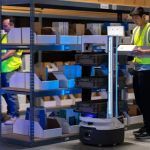In today’s fast-paced business environment, ensuring safety is paramount. Automation has become a key player in enhancing business safety by streamlining processes and reducing the risk of human error. This article delves into five common automated processes that are instrumental in safeguarding modern businesses.
Automated emergency alerts
Automated emergency alert systems are vital in providing timely notifications during crises such as fire outbreaks, active shooter situations, or natural disasters. These systems are set up to instantly disseminate information to all employees through texts, emails, or calls. The speed and reliability of automated alerts can save lives by ensuring everyone knows how to act quickly in dangerous situations.
Moreover, automated alerts can be integrated with various emergency protocols, ensuring comprehensive action plans are in place. Businesses can also conduct regular drills using these systems to better prepare employees for real emergencies. Automated alerts remove the delay and confusion often caused by manual notifications, providing a clear and direct method of communication during critical events.

Surveillance and monitoring systems
Surveillance and monitoring systems have advanced significantly with automation, enhancing business security. Modern automated surveillance systems use AI for real-time monitoring, capable of detecting unusual activities and potential threats instantly. These systems can function 24/7, reducing the need for constant human supervision.
Automated surveillance systems can cover vast areas, integrating with other security measures like access control systems. They also provide detailed records and analytics, helping businesses understand security breaches and prevent future incidents. With advanced features like motion detection, facial recognition, and activity pattern analysis, automated surveillance is a crucial component of business safety.
Advantages of automated surveillance
- Continuous monitoring without downtime.
- Enhanced detection capabilities.
- Integration with other security systems.
- Detailed incident records and analytics.
- Reduction in human error and oversight.
Access control systems
Automated access control systems are essential for regulating entry and exit points within a business premises. These systems often employ keycards, biometric scanners, or mobile device authentication to grant or deny access. By automating access control, businesses can ensure that only authorized personnel enter sensitive or restricted areas.
The time-stamped records provided by these systems allow for effective tracking of personnel movement, aiding in both security and operational efficiency. Automated access controls can also be programmed to lock down certain areas during specific times, providing an additional layer of security during non-operational hours. With enhanced biometric authentication methods, the risk of unauthorized access and potential security breaches is significantly minimized.
Automated compliance management
Regulatory compliance is a critical aspect of business operations, particularly for industries with stringent safety standards. Automated compliance management systems help businesses adhere to regulations by regularly monitoring and updating compliance status. These systems can automatically schedule audits, generate compliance reports, and alert management of any potential issues.
By reducing the manual workload associated with compliance, businesses can avoid hefty fines and legal problems. Automated systems ensure that all aspects of operation meet compliance standards consistently, thereby safeguarding the business’s reputation and operational integrity. They also provide an audit trail, essential for proving compliance during inspections or legal reviews.
Automated incident response
When safety incidents occur, rapid and efficient response is crucial. Automated incident response systems help manage these situations by executing pre-defined response protocols. This includes alerting first responders, engaging lockdown procedures, and notifying key personnel. Automation ensures that response times are minimized, and actions are taken systematically.
These systems can be tailored to respond to specific types of incidents, ensuring that the appropriate measures are triggered. By integrating with other safety systems, automated incident response creates a cohesive and comprehensive safety network. Regular updates and simulations can be conducted to ensure response protocols remain effective and relevant.

Conclusion
Automation has transformed the way businesses approach safety, embedding advanced technologies into everyday operations to protect both personnel and assets. From emergency alerts to compliance management, automated processes enhance the efficiency and reliability of safety measures. Implementing these automated solutions not only helps in mitigating risks but also in maintaining a secure and compliant operational environment.
FAQs
1. How do automated emergency alerts work?
Automated emergency alerts work by instantly disseminating critical information to employees via texts, emails, or calls during crises, thereby facilitating quick and organized responses to emergencies.
2. What are the benefits of automated surveillance systems?
Automated surveillance systems offer continuous monitoring, advanced detection capabilities, integration with other security measures, detailed incident analytics, and reduce the likelihood of human error.
3. Can automated access control systems be customized?
Yes, automated access control systems can be customized to different security requirements, including varying level of access permissions, restricting entry during specific times, and using multiple authentication methods like keycards or biometrics.
4. How do automated compliance management systems help businesses?
These systems aid businesses by automatically monitoring compliance status, scheduling audits, generating reports, and alerting management of potential issues, thereby helping avoid legal issues and fines while ensuring continuous adherence to regulations.
5. What role does automated incident response play in business safety?
Automated incident response systems quickly execute pre-defined response protocols during accidents, minimizing response times, ensuring systematic actions, and integrating with other safety frameworks to handle emergencies effectively.


